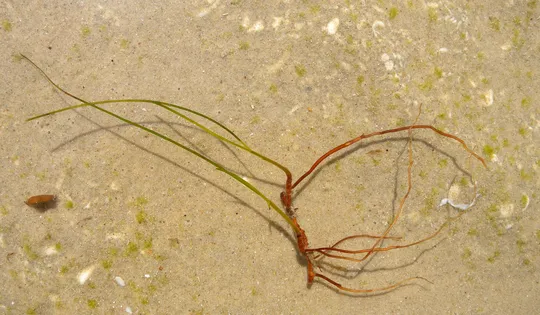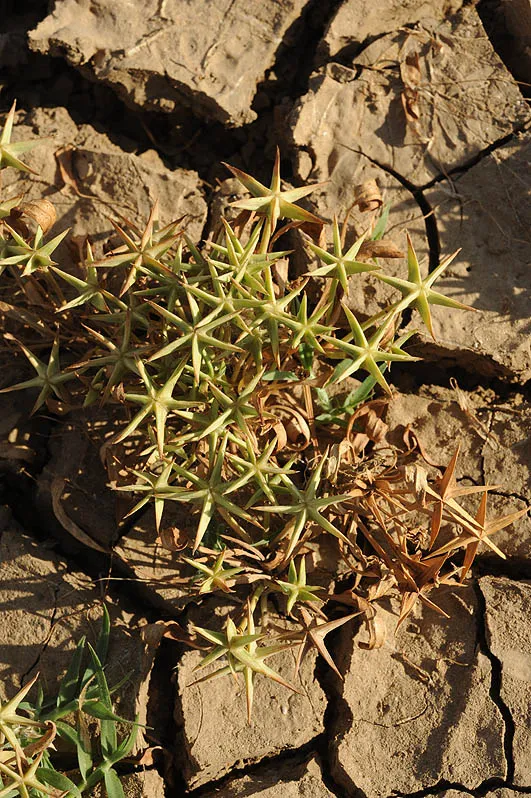Noodle Seagrass
Syringodium isoetifolium

Fish graze on all parts
of the plant.
First found Syringodium isoetifolium
in 2009 at a single site in seawater opposite the Pleshet coast, north of
Ashdod. Its main distribution close to the shores of Israel is in the Gulf of Elat,
but not in Israel's territorial waters.
Seas and oceans, from the water surface down to a depth
of several meters, on muddy bottoms. In the Gulf of Elat it does not grow in the
tidal area.
The genus Syringodium has only two species that
grow in tropical oceans. S.
isoetifolium is found in the Indian and Pacific Ocean and the second
species is found in the Caribbean Sea. S. isoetifolium probably reached
the Eastern Mediterranean from the tropical seas by Lessepsian migration, through the Suez
Canal. The Cymodoceaceae family also includes, in addition to Syringodium
the genera Cymodocea, Thalassodendron and Halodule, all submersed
seaweeds that grow in tropical waters, including the Red Sea and the Gulf of Elat.
On Israel's Mediterranean coast, C. rotunda grows as well.
Syringodium isoetifolium grows at a
single site on the Mediterranean coast and the population has been stable in
recent years. The plant is widely distributed in tropical waters and is not globally
endangered.
The Syringodium isoetifolium population growing
off the coast of Ashdod should be continuously monitored. The possibility of a
connection to marine pollution or to the discharge of hot water from the power
station and the status of the population should be examined.
Syringodium isoetifolium is found in the
sea off the coast of the Gulf of Elat (rare), in the Red Sea, the East African
coasts and Asian shores of the Indian Ocean, Madagascar and near the western
shores of the Pacific Ocean.
Syringodium isoetifolium is an extremely rare sea grass, which has only been found in recent years at a single site in the sea off the coast of Ashdod.
ויזל, י. וליפשיץ, נ. 1979. צמחי מים בישראל. הוצאת רשות שמורות הטבע
Lipkin, Y., Beer, S. and Zakay, D. 2003. The seagrasses of the eastern Mediterranean and the Red Sea. In: E. Green and F.T Short (eds.). World Atlas of Seagrasses. University of California Press, pp. 75-83.
Current Occupancy Map
| 1000 squre meter pixel | 5000 squre meter pixel | 10000 squre meter pixel | |
|---|---|---|---|
| number of observations | 0 | 0 | 0 |
| in total pixels | 0 | 0 | 0 |
| Family | Cymodoceaceae |
| Classification | Unlisted |
| Ecosystem | Mediterranean |
| Chorotype | Tropical |
| Conservation Site | Ashdod Beach |
| Rarity |
1
6
6
|
|---|---|
| Vulnerability |
0
4
4
|
| Attractiveness |
0
0
4
|
| Endemism |
0
0
4
|
| Red number |
1
5.3
10
|
| Peripherality | 0 |
| IUCN category | DD EW EX LC CR EN VU NT |
| Threat Definition according to the red book | Least concern |
 Based on:
Based on:






